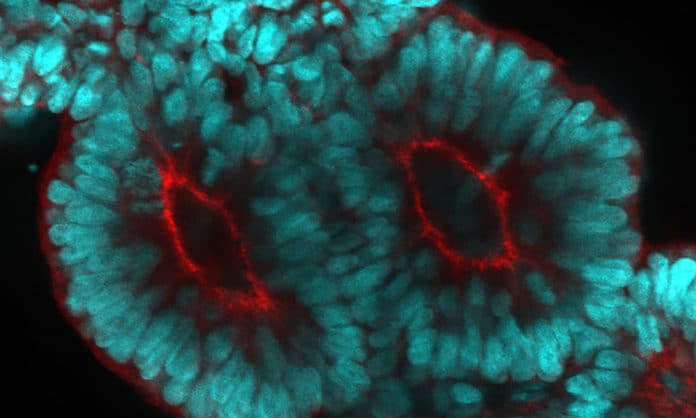The spinal column is the main supporting structure of the skeleton, providing a place for muscles to attach and protect the spinal cord and nerve roots. It consists of 33 vertebrae, which form pairs of precursor structures called somites. Somites give rise to not only our vertebrae but also our ribs and skeletal muscles.
Somite development is tightly regulated during the formation of this spinal column, and each pair of somites arises at a particular sequential time point in development. A group of genes called the segmentation clock controls this process. The genes create oscillatory waves, every wave giving rise to a new pair of somites.
Scientists from the Ebisuya Group at EMBL Barcelona have created a 3D in vitro model that mimics how the precursor structures give rise to the spinal column form during human embryonic development. This is the first time they have recapitulated in the laboratory how the cellular structures that give rise to our spinal column form sequentially.
They created periodic pairs of human mature somites linked to the segmentation clock in the lab. This approach helps them develop a 3D in vitro model of human somite formation, also known as ‘somitogenesis.’
The team used a mixture of signaling molecules to stimulate cell development in human induced pluripotent stem cells (hiPSCs). Three days later, the cells began to elongate and form anterior (top) and posterior (bottom) axes. Later, they added Matrigel to the culture mix. Matrigel is a protein mixture essential to numerous developmental processes, which some scientists call “magic powder.” Somitoids, in vitro counterparts of human somite precursor structures, were formed due to this procedure.
By determining the expression patterns of HES7, the core gene involved in the process, scientists could determine whether the segmentation clock regulates somitogenesis in these somitoids. They found clear evidence of oscillations, especially when somitogenesis was about to start. The somites that formed also had clear markers of epithelization – an essential step in their maturation.
Sanaki-Matsumiya said, “The current study also shows a link between the size of somites and the segmentation clock. The generated somites had a regular size, independently of the number of cells used for the initial somitoid. The somite size did not increase even if the initial cell number did.”
“This suggests that the somites have a preferred species-specific size, which might be determined by local cell-cell interactions, the segmentation clock, or other mechanisms.”
Scientists are now planning to grow somitoids of different species and compare them to study this further.
Journal Reference:
- Sanaki-Matsumiya, M., Matsuda, M., Gritti, N. et al. Periodic formation of epithelial somites from human pluripotent stem cells. Nat Commun 13, 2325 (2022). DOI: 10.1038/s41467-022-29967-1
